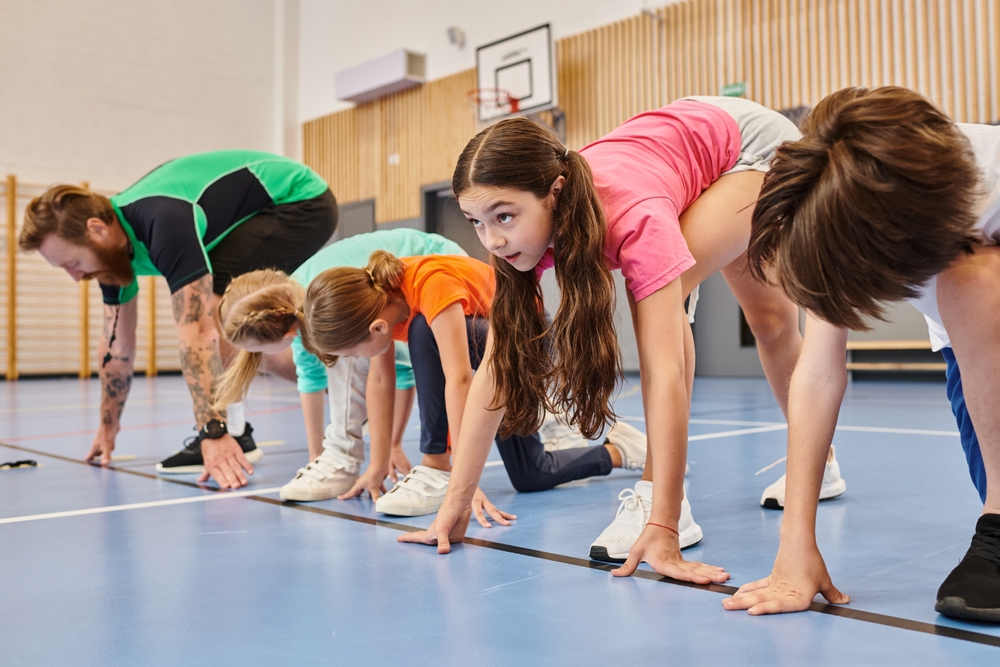Physical Education Jobs — A Complete Guide
Introduction
Physical Education (PE) jobs matter. They shape healthy lives. build teamwork, confidence, and strength. They do more than teach sports. or teach life skills.
This guide helps you understand jobs in physical education. It shows the types of roles, salary you might expect. It shares skills you must build. also tells how to get started. and helps you decide if a PE job fits you.

Table of Contents
- What is Physical Education
- Why Choose a Career in PE
- Types of Physical Education Jobs
- Top Skills Required
- Educational Backgrounds and certifications
- Salary expectancies and employment growth
- Daily activities
- Pros & Cons
- How to Land a PE Job
- Future of Physical Education Careers
1. What is Physical Education
When it comes to physical education and health education, it is essentially about teaching movement, fitness, sports, and health, all to foster exercise behavior among the students. It helps students learn how to care for their body. It includes games, exercises, sports, and wellness.
A PE job means you guide people. They could be kids or adults. You teach skills, coach them, help them grow physically and mentally and design sessions. You make activities safe.
2. Why Choose a Career in PE
You get satisfaction by helping others. You see people grow strong and confident. and work in healthy settings. and often stay physically active. it can vary your work — school, sports clubs, wellness centers.
It also can lead teams. You can plan events, shape programs, coach, teach.
Many PE jobs demand creativity. You can bring new games and ideas. That keeps your work fresh.
3. Types of Physical Education Jobs
Below are different roles. Each role has its own duties, skills, and settings.
| Role | Where you work | What you do |
| PE Teacher | Schools (elementary, middle, high school) | Teach sports, games; help kids learn fitness; plan lessons |
| Fitness Trainer / Instructor | Gyms; fitness centers; private clients | Lead workouts; coach strength, cardio, flexibility |
| Sports Coach | Clubs; schools; private academies | Train athletes; improve skills; plan practice sessions |
| Athletic Trainer | Schools; clinics; sports teams | Prevent injuries; help recovery; physical therapy |
| Sports Nutritionist / Dietitian | Team programs; wellness centers | Plan diet; advise on food; help performance |
| Recreation Director / Coordinator | Community centers; resorts; camps | Organize sport events; schedule programs; manage staff |
| Postsecondary PE / Health Instructor | Colleges; teacher-training institutes | Teach other teachers; lead big classes; research |
| Sports Development Officer | Government; NGOs; sports bodies | Plan programs for sports uptake; promote fitness in society |
4. Key Skills You Need
The jobs of PE require a mixture of physical, interpersonal, and planning skills, which then are distinguished according to the particular type of work; here are the essentials:
- Strong communication skills. You must explain, motivate, and correct the form.
- Leadership. You guide groups, keep order. You decide on activities.
- Knowledge of human body, fitness, nutrition. You must know safety, anatomy, how exercise affects the body.
- Adaptability. You may teach different age groups. You may teach indoors or outdoors
- Patience. Some learners struggle. You support them.
- Motivation skills. You help people work hard.
- First aid / safety training. You need to prevent risks and respond to injuries.
5. Education & Certification Requirements
Requirements for schooling and certifications tend to depend on the country and the role. Here is a general classification of needs:
- A bachelor’s degree in physical education, sports science, kinesiology, or a related field.
- In schools, sometimes a teaching certificate or license is required.
- Coaching roles may need specific coaching certifications.
- Fitness instructors often need certification (CPR, first‐aid).
- For postsecondary teaching or research, you may need master’s or doctoral degrees.
- You may need continuing education or professional development courses.
6. Salary Expectations & Job Growth
People often ask: how much will I earn? What is demand like?
Salary
- PE teachers are paid around 54,000 to 75,000 USD per annum on average, the figure depending on the geographical location and experience.
- Entry roles (fitness trainer or assistant teacher) pay less. As you gain experience, your pay can rise.
- Postsecondary positions pay more. Salaries are higher when you teach at university level or have advanced degrees.
Job Growth
- Demand for physical education teachers remains steady. Schools need PE teachers.
- Fitness and wellness centers are growing. More people want to remain healthy, and more trainers and coaches are in demand.
- Sports development and recreational activities, including community programs, are also expanding. Governments and NGOs are investing in health.
- More new opportunities emerge in sports administration-facilitated physical education, sports technology, and performance analysis.
7. Day-to-Day Duties
What a typical day might look like:
- Plan lessons or training sessions.
- Teach physical skills such as sports, movement, and fitness drills.
- The systems require warming up and cooling down, and conscientious safety must be kept in consideration.
- Check and maintain equipment.
- Assess student progress. Give feedback.
- Coach or lead sports teams.
- Meet parents or guardians. Report progress.
- Possibly run fitness or nutrition workshops.
- Manage discipline. Keep students engaged.
- Sometimes I prepare reports. Sometimes I do administrative work.
8. Pros & Cons
Every job has good and bad parts. PE jobs are no different.
Pros
- You stay active.
- Its help others improve health.
- You see clear progress in learners.
- They work in vibrant, lively environments.
- You can work in many different settings.
- You can combine roles (teacher + coach + trainer).
Cons
- You may face low pay at entry levels.
- Work may require evenings or weekends (sports events).
- You may deal with difficult behavior.
- Risk of injury. You must manage safety constantly.
- Some environments are outdoors—weather can get harsh.
- You need ongoing certifications.
9. How to Land a PE Job
To get into a PE job, follow steps like these:
- Study relevant courses. Choose a degree in physical education, sports science, or health.
- Get certified. Do a teaching license where needed. Do first-aid and CPR. Get coaching certificates.
- Gain experience. Volunteer in schools. Assist in sports clubs. Coach teams. Intern at fitness centers.
- Build your resume. List your degrees, certifications, experience. Highlight your leadership. Show results.
- Network. Meet people in schools, clubs, gyms. Attend workshops. Join professional associations.
- Apply carefully. Tailor your CV to each role. Show passion. Show how you helped past students or clients.
- Prepare for interviews. Be ready to demonstrate class plans. Be ready to show how you deal with safety, discipline, motivating students.
10. Future of Physical Education Careers
Here are trends to watch:
- More focus on health and wellness overall. Physical education won’t just teach sport. It will include mental wellbeing, nutrition, lifestyle.
- Technology will shape PE. Wearables, fitness apps, virtual training, performance tracking. PE professionals will use data.
- Adaptive education will grow. Jobs for teaching students with special needs or disabilities will rise.
- Online PE and fitness coaching will expand. People will seek classes from home.
- Policy changes may affect PE time in schools. Some places reduce PE; others increase it. Demand depends on public policy.
- The global health challenges of obesity and lifestyle diseases, the promotion of physical activity by governments, and these new roles in this sector may seem incoherent and contingent upon another.
Conclusion
Physical Education jobs offer fulfilling work. They let you make a difference, stay active. They let you build communities. If you choose this path, invest in education. Develop your skills. Gain experience. Stay current.
You will face challenges. But you also will enjoy rewards. You will see students grow. You will help people thrive.




